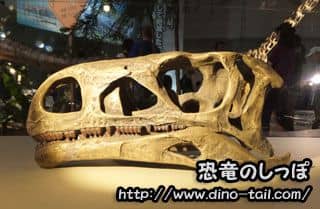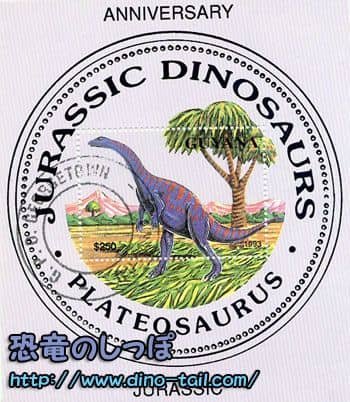About Plateosaurus
| Scientific Name (Genus) | Plateosaurus |
| Meaning of Name |
Flat lizard
plateos (flat, broad) [Greek] - saurus (lizard) [Greek] |
| Classification | Saurischia, Sauropodomorpha (Plateosauridae) |
| Total Length | Approx. 8m |
| Diet | Herbivorous |
| Period | Late Triassic |
| Species |
Plateosaurus engelhardti
Plateosaurus gracilis |
| Year of Paper Publication | 1837 |
| Genus Name Publication |
Mitteilung an Prof. Bronn (Plateosaurus engelhardti.
Neues Jahrbuch für Geologie und Paläontologie (in German). 1837: 316. by Hermann von Meyer. 1837. |
Features
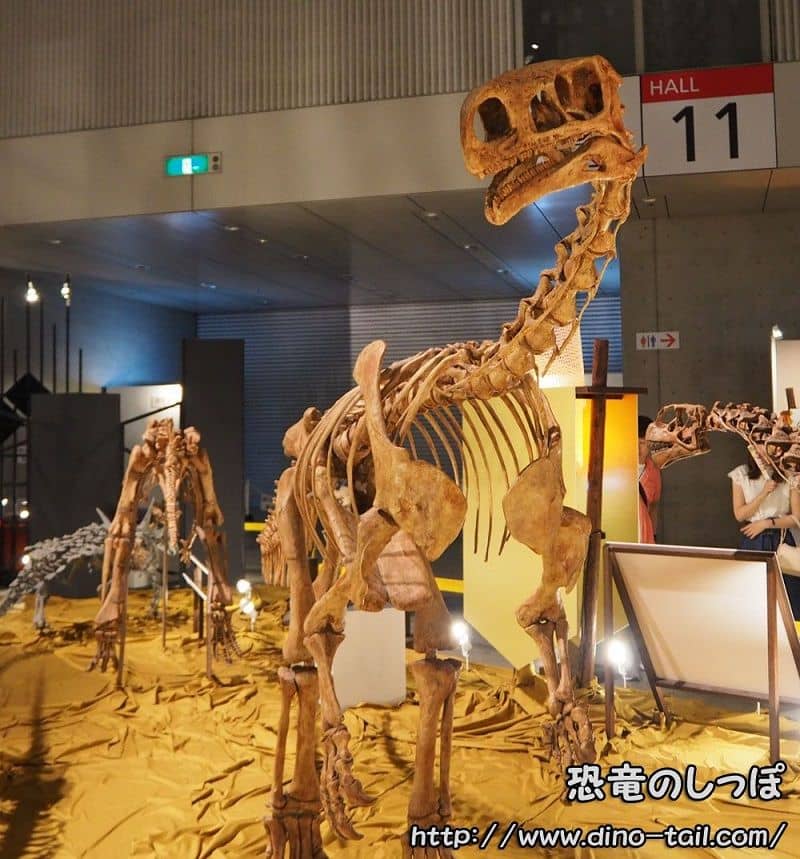
Plateosaurus was a primitive sauropodomorph that lived in the early age of dinosaurs, the Late Triassic. It is classified as a prosauropod. At 8 meters long, it was small compared to the sauropods of the Jurassic and later periods, but it was an astonishingly large land animal for the Late Triassic.
It is characterized by a bulky torso and a long neck. The first digit of its forelimb had a large claw. The claw may have been used to grasp high branches or to dig up roots.
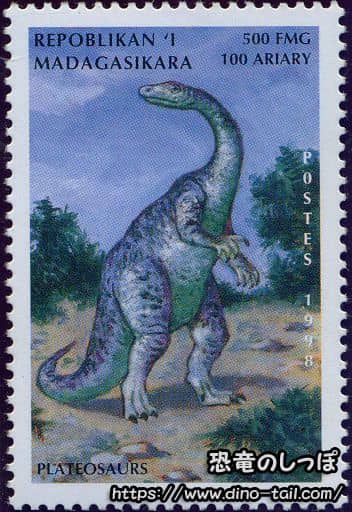
Its large nasal cavity suggests that it had a keen sense of smell.
Also, one of the reasons it was able to be so active despite its large size is that it had an efficient respiratory system similar to that of birds . It is thought that its vertebrae had hollows that were connected to the lungs by 'air sacs,' which would have lightened its body while allowing it to take in sufficient oxygen.
Over 100 specimens have been discovered over a wide area of Europe, particularly in Germany, France, and Switzerland, indicating that it was a very successful dinosaur in the Late Triassic. The 'miring' theory is a leading explanation for why so many fossils are found together: they moved in herds and became trapped in muddy watering holes during droughts, forming 'bonebeds' where they died and were fossilized as a group.
A Bipedal Sauropodomorph
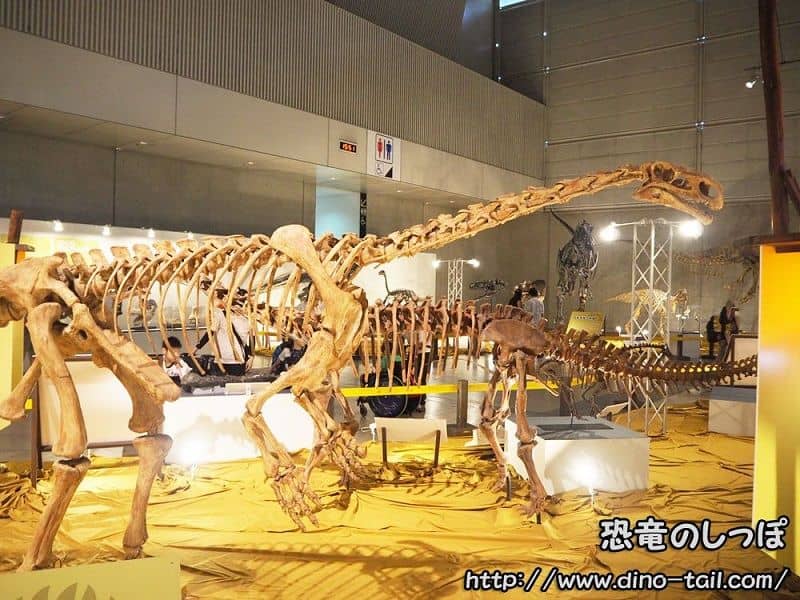
Unusually for a sauropodomorph, it appears to have been bipedal.
Plateosaurus walked on two legs.
It was once thought that it was also capable of walking on four legs, but research using computer skeletal modeling has shown that Plateosaurus was not suited for quadrupedal locomotion. Its forelimbs were fixed with the palms facing inward and could not be rotated to face downward. This means that it could not place its forelimbs on the ground to support its weight.
Also, while many sauropodomorphs have five toes on their hind feet, Plateosaurus had only four.
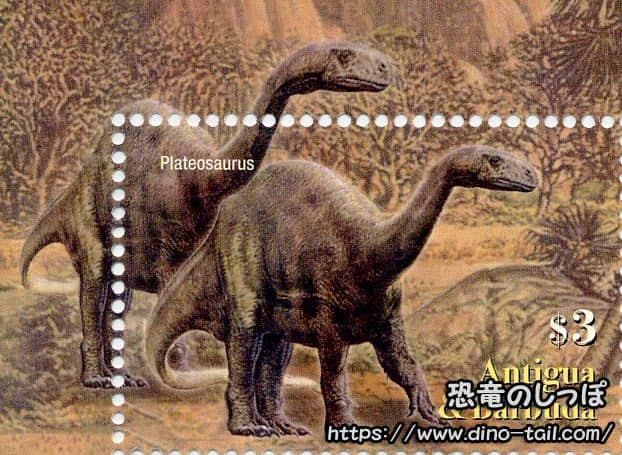
It is now known that it was not suited for quadrupedal locomotion.
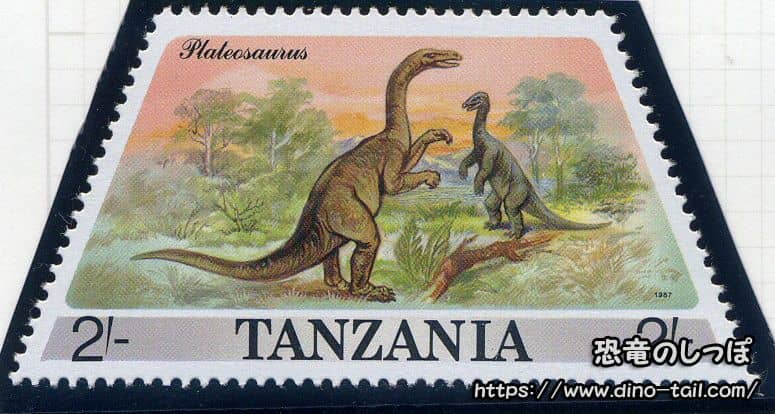
Flexible Growth Strategy: Intermediate Between Reptiles and Birds?
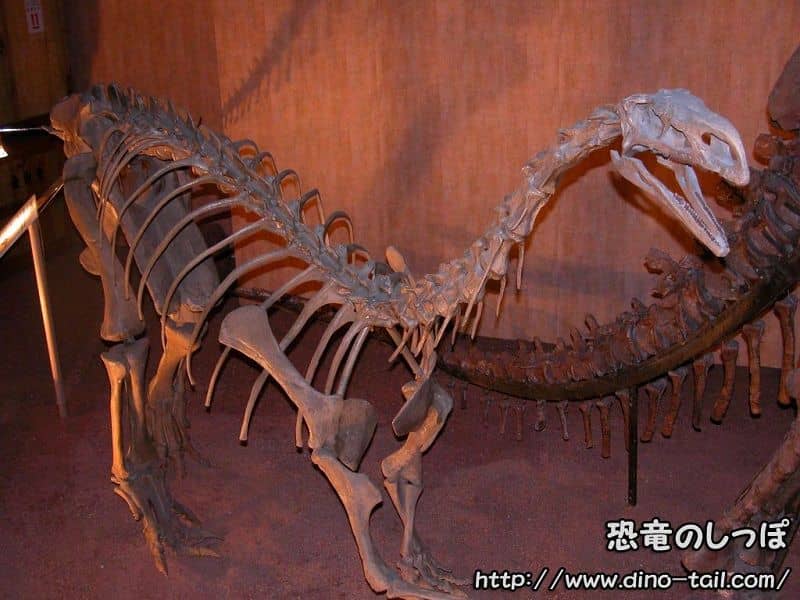
Taking advantage of the large number of specimens, the internal structure (histology) of Plateosaurus bones has been actively studied. As a result, it has been revealed that they had a very unique growth strategy.
Modern birds and mammals (warm-blooded animals) grow at a constant rate regardless of the environment, while reptiles (cold-blooded animals) grow faster when the environment is favorable and slower when it is not. The bones of Plateosaurus showed characteristics of both. While having the reptilian characteristic of changing its growth rate according to the environment, it was also capable of rapid growth spurts like birds.
This flexible growth strategy, called ' developmental plasticity ,' may have been one of the secrets to Plateosaurus's remarkable success in the unstable environment of the Triassic period.
Genus Description Before "Dinosaur"
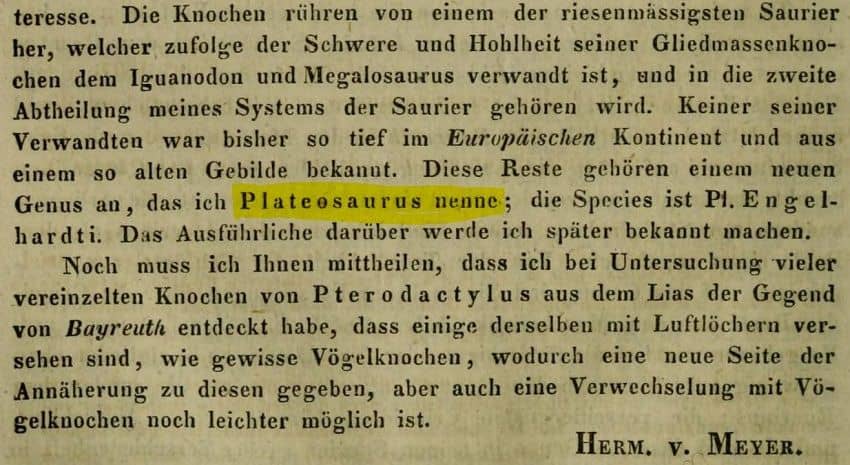
Source: Mitteilung an Prof. Bronn (Plateosaurus engelhardti. Neues Jahrbuch für Geologie und Paläontologie (in German). 1837: 316. by Hermann von Meyer. 1837.
In 1834, the physician Johann Friedrich Engelhardt discovered vertebrae and leg bones near Nuremberg in Bavaria, Germany. Three years later, in 1837, the German paleontologist Hermann von Meyer named the new genus Plateosaurus. Since then, over 100 specimens have been discovered in various locations throughout Europe, including Germany, Switzerland, and France.
It was in 1842, five years after Plateosaurus was described, that Richard Owen of the British Museum of Natural History proposed the term 'Dinosauria.' At that time, the three genera that Richard Owen considered to be dinosaurs were Iguanodon, Megalosaurus, and Hylaeosaurus. In 1842, Plateosaurus was not considered a dinosaur.
Plateosaurus Stamp & Fossil Gallery
